The cost to resize a ring can depend on a number of factors, such as the type of metal, the complexity of the design, the degree of resizing needed, and the jeweler’s pricing structure.
A simple resize can generally range from $20 to $70 for simpler metals like silver or gold. More complex materials like platinum may cost more due to the higher skill required to work with them, potentially ranging from $60 to $150.
Resizing a ring with intricate detailing, stones, or complex design elements can be more expensive, as it’s a more delicate and intricate process. This can cost anywhere from $50 to $150 or more.
Some jewelers offer free resizing for a certain period after purchase. When you buy a ring, it’s always a good idea to ask about resizing policies.
Please note that these are estimates, and the prices can vary greatly based on location and specific jeweler. Always check with a trusted jeweler for a quote. Also, note that not all rings can be resized due to their design or materials, so this is an important factor to consider if you are considering a ring.
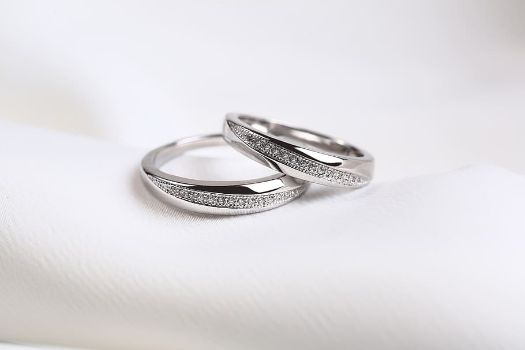
Factors that Affect Ring Resizing Costs
Type of Metal
The type of metal significantly influences the cost of resizing a ring. More valuable and difficult-to-work-with metals like platinum and palladium will cost more to resize because they require special skills and equipment. For example, resizing a gold ring may cost between $20-$60, while a platinum ring might cost between $50-$100 or even more due to its complexity and the value of the metal.
Ring Thickness
The thickness of the ring band also affects the resizing cost. Thicker rings require more material when being made larger and more work when being made smaller. Therefore, resizing a thicker ring typically costs more than resizing a thinner ring.
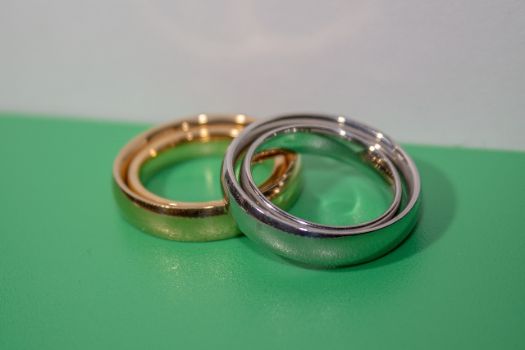
Smaller or Larger
Making a ring larger usually costs more than making it smaller. This is because making a ring larger often requires the addition of extra material to the band. The cost of this extra material, especially if the ring is made of a precious metal, can significantly increase the resizing cost. On the other hand, making a ring smaller typically involves removing material and doesn’t require extra material. Thus, it usually costs less.
Stones
Rings with stones, particularly those with stones around the band (eternity bands), can be more complicated and expensive to resize. The risk of damaging the stones during resizing may require a skilled and careful jeweler, and the stones may even need to be removed and then reset in the band, increasing the cost.
Some types of stones are sensitive to the heat used in the resizing process, which adds another layer of complexity. Depending on the number and type of stones, the complexity of the design, and the expertise required, this could add $50-$200 or more to the cost of resizing.
Types of Ring Metal & Resizing
Gold (Yellow, White, Rose)
Gold is one of the most traditional metals for rings. Resizing gold is generally straightforward for a skilled jeweler, so the cost is usually moderate. The price may slightly differ depending on the type of gold (10K, 14K, 18K) due to the different amounts of gold content.
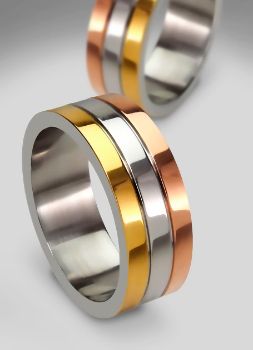
Sterling Silver
Silver is softer and less expensive than gold and platinum, which makes it relatively easy and inexpensive to resize. However, silver rings are prone to tarnish and may require additional care over time.
Platinum
Platinum is durable and highly resistant to wear, but it’s also more difficult to work with than gold or silver. Resizing a platinum ring generally costs more because it requires a jeweler with experience and skill.
Palladium
Palladium is a lighter and less expensive alternative to platinum. It’s somewhat difficult to resize due to its properties, so the cost of resizing a palladium ring may be similar to or slightly less than platinum.
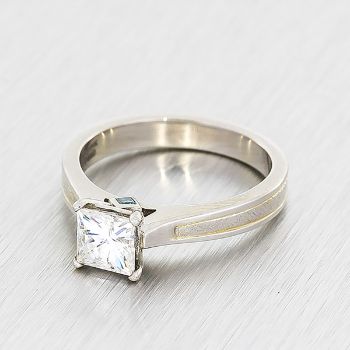
Titanium
Titanium is strong, lightweight, and hypoallergenic. However, it’s one of the most difficult metals to resize due to its strength. Some titanium rings cannot be resized at all. If resizing is possible, it will likely be expensive.
Tungsten
Tungsten is extremely hard and scratch-resistant. However, due to its hardness, tungsten rings cannot be resized. When purchasing a tungsten ring, it’s crucial to have the correct size.
Stainless Steel
Stainless steel is a durable and affordable metal for rings. However, resizing can be a challenge due to the hardness of the metal. Some stainless steel rings may not be resizable.
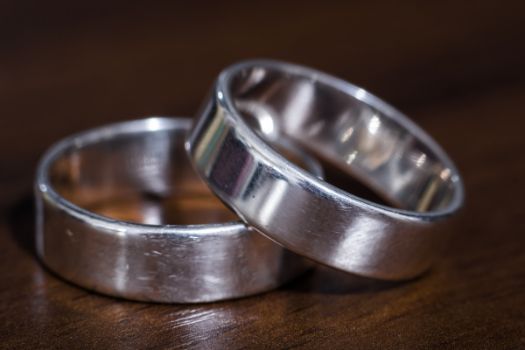
Alternatives to Ring Resizing
- Ring Guards or Ring Size Adjusters: These are plastic or metal devices that you can attach to the inside of the ring band to make it fit more snugly. They’re inexpensive and can be a good temporary solution.
- Ring Snuggies or Ring Sizers: Similar to ring guards, small pieces of silicone or soft plastic slide onto the ring’s band to make it fit better. They are a comfortable and quick solution but may not be very durable.
- Using a Spring Insert: A jeweler can add a small spring-like piece of metal to the inside of the ring. This can help keep the ring in place without permanently changing the size of the ring.
- Sizing Beads: A jeweler can add two small metal beads to the inside of the ring’s band. This will make the ring fit more snugly without significant resizing. This is usually a better option for rings that are only slightly too big.
- Finger Cones or Ring Loops: These devices attach to the ring and wrap around the back of your finger to keep the ring from spinning. This is particularly useful for top-heavy rings.
- Replacement or Exchange: If the ring is newly purchased and simply the wrong size, some jewelers or retailers may offer an exchange or replacement service for the correct size, especially if the ring cannot be resized due to its design or material
Tips to Select a Jeweler for Ring Resizing
- Check Their Credentials: Ensure the jeweler has the necessary training, qualifications, and certification. Certified jewelers are likely to provide high-quality service.
- Reputation and Reviews: Look at the jeweler’s reputation and reviews online. Customers’ experiences can give you a good idea of what to expect.
- Ask for Recommendations: Word of mouth can be very reliable. Ask friends or family members if they have any jewelers they’d recommend, especially those who have had rings resized.
- Transparency in Pricing: A reputable jeweler should be able to give you a clear pricing structure upfront so you know what to expect.
- Experience with Similar Tasks: If your ring is made of a unique material or has a complex design, ensure the jeweler has experience resizing similar rings.
- Warranty and Aftercare: Some jewelers offer a warranty for their work or free aftercare services such as cleaning and maintenance. This could be a valuable addition to their resizing service.
- Insured and Bonded: Check if the jeweler is insured and bonded; this protects if anything goes wrong during resizing.
- Communication: A good jeweler should take the time to explain the process, answer your questions, and ensure you’re comfortable with the steps involved in resizing your ring.
- Turnaround Time: Ask about the jeweler’s expected timeline for the resizing job, especially if you need the ring by a specific date.
- Check if they belong to a professional organization: Membership in organizations such as the American Gem Society or Jewelers of America is a good sign, as these organizations have stringent ethical and quality standards for their members.
Frequently Asked Questions
How long does it take to get a ring resized?
The timeframe for resizing a ring can depend on the complexity of the resizing and the jeweler’s schedule, but typically it takes between one week and two weeks. In some cases, if the jeweler is not busy and the resize is straightforward, it could be done within a few days.
Is it cheaper to make a ring smaller or larger?
Generally, it is cheaper to make a ring smaller because it involves removing material rather than adding more. Making a ring larger typically requires additional metal, which increases the cost.
Can resizing damage a ring?
Yes, if not done correctly, resizing can potentially damage a ring. The process involves cutting and manipulating the metal, which can cause stress or distortion, especially in rings with intricate designs or delicate gemstones. That’s why having a reputable, skilled jeweler perform the resizing is important.